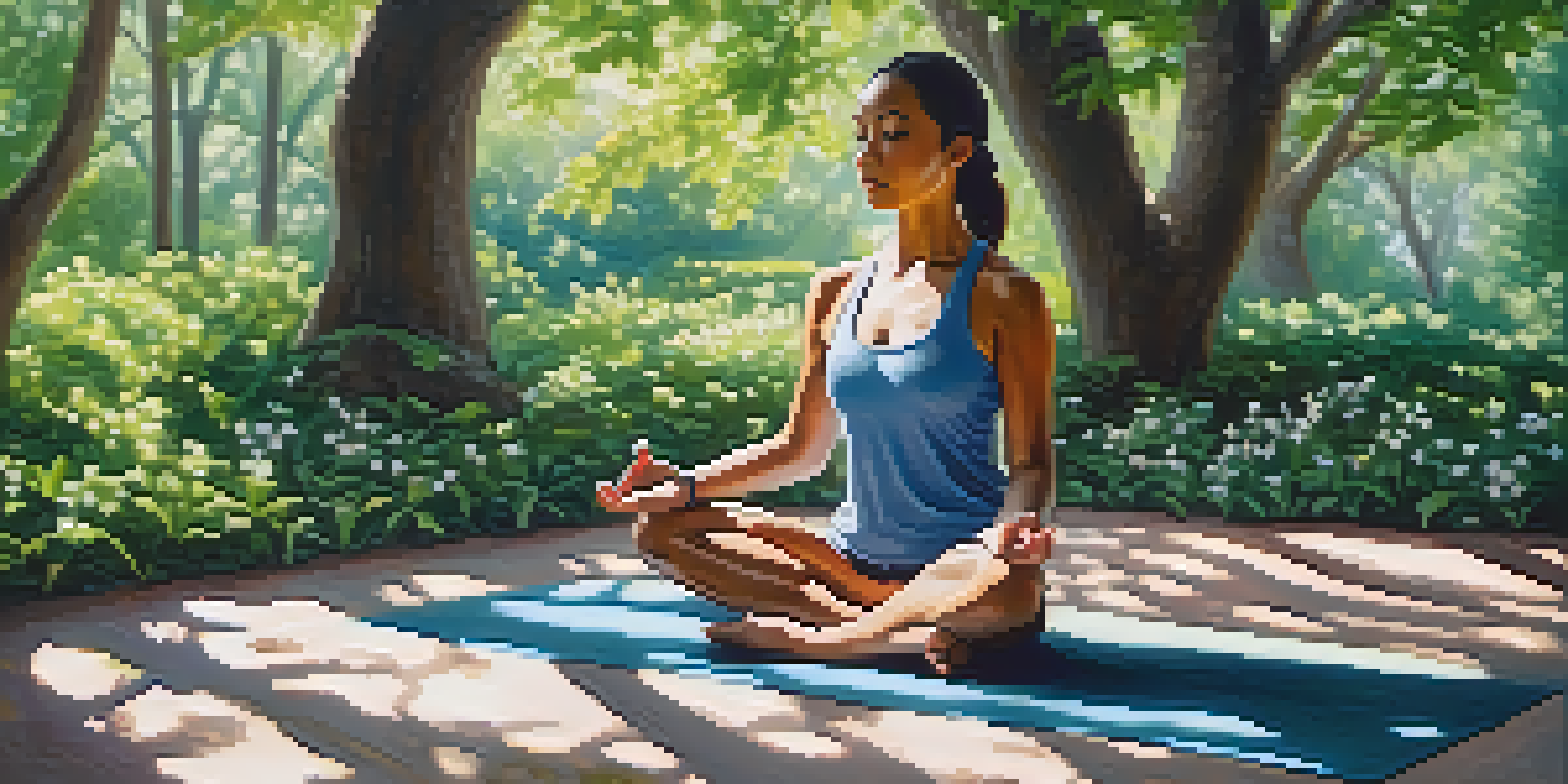Understanding Personal Boundaries in Self Defense Situations

What Are Personal Boundaries and Why They Matter
Personal boundaries are the limits we set for ourselves in relationships. They define what we find acceptable and unacceptable behavior from others. In self-defense situations, understanding these boundaries is crucial, as they help us recognize when someone is infringing upon our space or safety.
Boundaries are a part of self-care. They are healthy, normal, and necessary.
Think of personal boundaries as a protective bubble around you. When this bubble is breached, it can lead to feelings of vulnerability or danger. Recognizing this breach is the first step in assessing whether a self-defense response is necessary.
Establishing clear personal boundaries not only enhances your self-awareness but also empowers you to communicate your needs effectively. By doing so, you create a foundation for safe interactions, which is vital in potentially harmful situations.
Types of Personal Boundaries to Recognize
There are several types of personal boundaries, including physical, emotional, and digital boundaries. Physical boundaries relate to your personal space and touch, while emotional boundaries involve your feelings and how much you share with others. Digital boundaries pertain to your online presence and privacy.

For example, if someone invades your physical space without consent, it may trigger a self-defense response. Recognizing these types of boundaries helps you identify when someone is overstepping, which is crucial for your safety.
Understanding Personal Boundaries
Personal boundaries define acceptable behavior and help protect your emotional and physical space.
Understanding these boundaries allows you to set clear guidelines in your interactions. When you know what types of boundaries you have, you can more easily defend them when necessary, leading to better self-defense outcomes.
Recognizing Boundary Violations in Real Time
Recognizing when your boundaries are violated is essential in self-defense. This can be as subtle as someone standing too close or as overt as verbal aggression. Being aware of these signs allows you to react appropriately before a situation escalates.
Your personal boundaries protect the inner core of your identity and your right to choices.
For instance, if someone approaches you too closely in a public space, it’s important to assess the situation. Trust your instincts; if something feels off, that’s a boundary violation in its own right. Responding appropriately can prevent further escalation.
Practicing mindfulness can help you become more attuned to your boundaries. By being present in the moment, you can more easily identify potential threats and take proactive measures to protect yourself.
Communicating Your Boundaries Effectively
Effective communication is key when it comes to establishing and maintaining personal boundaries. Use clear and assertive language to express your needs and limits. Phrases like 'I need more space' or 'I’m not comfortable with that' can be powerful tools.
Imagine you're in a crowded place, and someone is getting too close for comfort. A simple, direct statement can often be enough to regain control of the situation. Clear communication not only reinforces your boundaries but also sends a message that you're aware and assertive.
Recognizing Boundary Violations
Being aware of boundary violations allows you to react appropriately and prevent escalation.
Remember, it’s your right to protect your boundaries. Practicing how to communicate them can build your confidence, making it easier to respond effectively in self-defense scenarios.
The Role of Confidence in Setting Boundaries
Confidence plays a significant role in maintaining your personal boundaries. When you feel self-assured, you're more likely to assert your limits and stand firm against violations. Building this confidence can be achieved through practice and self-reflection.
Picture yourself as a tree with strong roots; the more grounded you feel in your boundaries, the harder it is for others to shake you. This inner strength can deter potential aggressors who sense your assertiveness.
Engaging in activities that boost your confidence, like martial arts or public speaking, can help reinforce your personal boundaries. The more empowered you feel, the better equipped you are to handle situations that may challenge your safety.
Self-Defense Techniques for Boundary Protection
Knowing self-defense techniques can help you protect your boundaries physically. Techniques like verbal de-escalation, body positioning, and defensive maneuvers are all vital tools in your arsenal. They empower you to take action when needed and keep intrusions at bay.
For example, learning how to create distance between you and an aggressor can be crucial in a dangerous situation. Utilizing your body language to project confidence can also deter potential threats before they escalate.
Confidence in Communicating Boundaries
Confidence is key to asserting your limits effectively, helping to maintain your personal safety.
Moreover, understanding self-defense not only protects your physical space but also reinforces your mental boundaries. Knowing you have the skills to defend yourself can enhance your overall sense of security.
The Importance of Practicing Boundary Awareness
Practicing boundary awareness is essential for maintaining personal safety. This involves regularly assessing your surroundings and the behavior of those around you. The more you practice, the more instinctual your reactions will become.
For instance, if you frequently check in with your own feelings during social interactions, you can better gauge when your boundaries are being tested. This heightened awareness allows you to respond in real time, rather than reacting after a violation occurs.

Consider incorporating boundary awareness exercises into your daily routine. This could be as simple as self-reflection after social events or role-playing scenarios with friends to build your comfort level in asserting boundaries.